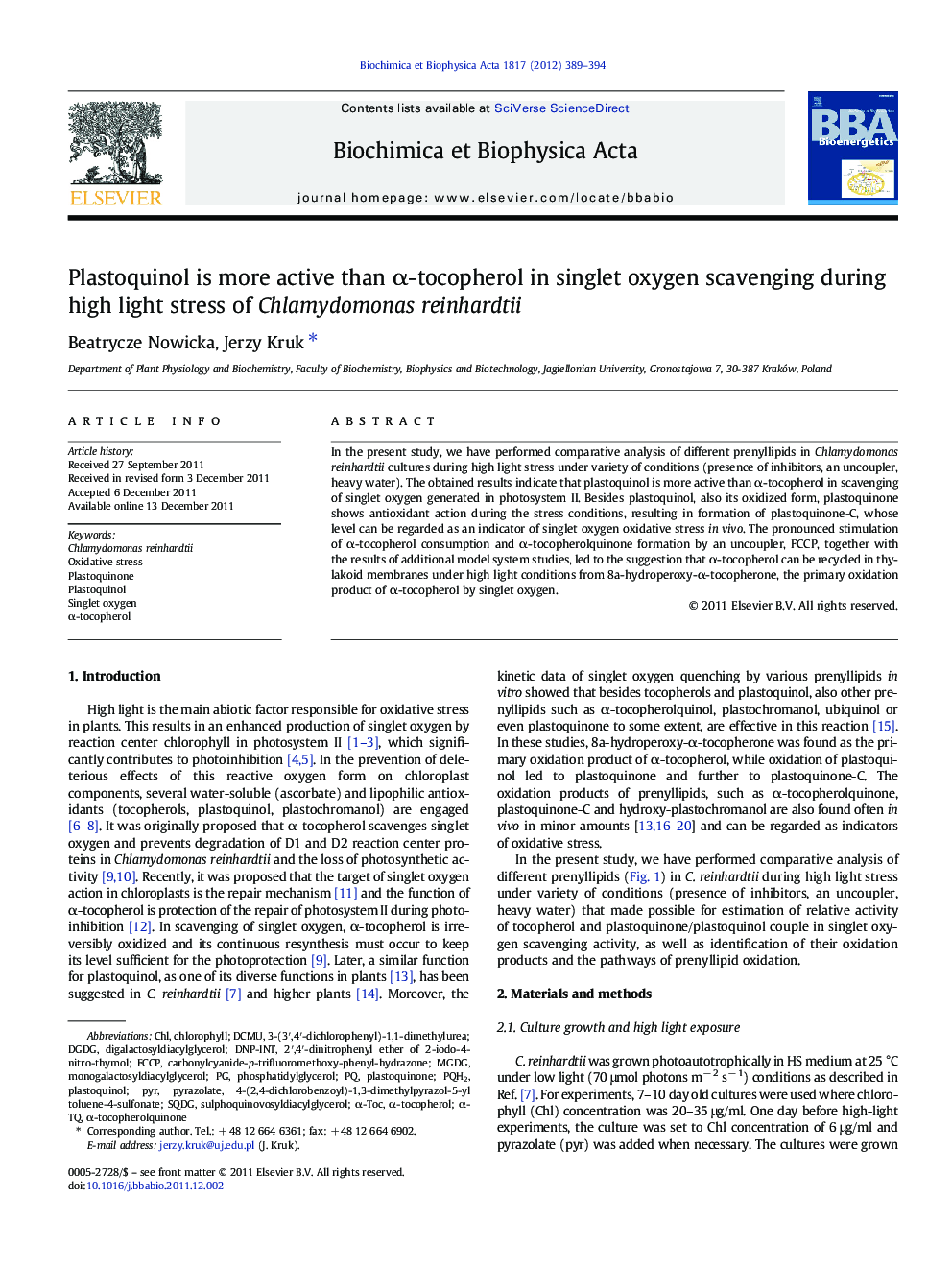| Article ID | Journal | Published Year | Pages | File Type |
|---|---|---|---|---|
| 1942472 | Biochimica et Biophysica Acta (BBA) - Bioenergetics | 2012 | 6 Pages |
In the present study, we have performed comparative analysis of different prenyllipids in Chlamydomonas reinhardtii cultures during high light stress under variety of conditions (presence of inhibitors, an uncoupler, heavy water). The obtained results indicate that plastoquinol is more active than α-tocopherol in scavenging of singlet oxygen generated in photosystem II. Besides plastoquinol, also its oxidized form, plastoquinone shows antioxidant action during the stress conditions, resulting in formation of plastoquinone-C, whose level can be regarded as an indicator of singlet oxygen oxidative stress in vivo. The pronounced stimulation of α-tocopherol consumption and α-tocopherolquinone formation by an uncoupler, FCCP, together with the results of additional model system studies, led to the suggestion that α-tocopherol can be recycled in thylakoid membranes under high light conditions from 8a-hydroperoxy-α-tocopherone, the primary oxidation product of α-tocopherol by singlet oxygen.
► Plastoquinol is more active than α-tocopherol in scavenging of singlet oxygen. ► Plastoquinone also shows antioxidant action during high-light stress. ► Oxidation of plastoquinone by singlet oxygen results in formation of plastoquinone-C. ► Uncoupling of proton gradient results in enhanced α-tocopherolquinone production.
